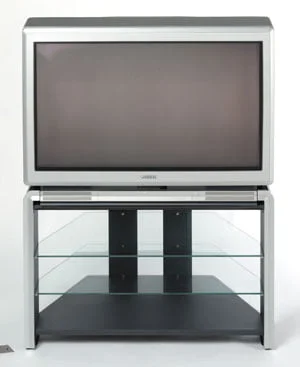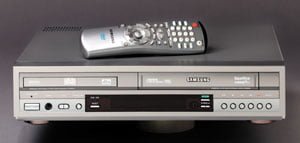
Retailers simply cannot afford to ignore these developments. However, not all retailers are equally well placed to take advantage of this changing environment for trade. This case study looks at why Dixons turned to the Internet, and why for them it is proving a success.
The Dixons Group is the largest specialist consumer electrical retailer in Europe. The Group operates in eleven Western European countries. Its UK retail operations include Dixons, Currys, PC World and The Link. In 1997, Dixons created the first fully transactional online service in the UK. Its two main reasons for doing this were:
- Dixons anticipated the growth in online e-commerce trading
- Dixons wished to strengthen the visibility of the brand, particularly among PC and internet users.
Leading brands
If leading brands are to maintain their position, they need to be continually brought to the public’s attention. The Internet offered new, powerful opportunities for publicity and sales. Dixons is forward-thinking. Its consumers are changing all the time and looking for new shopping opportunities. Hence, it is highly aware of the importance of multi-channel selling, and of the need to exploit fully those channels that give greatest value to customers and which are growing in popularity. To meet the needs of today’s marketplace, Dixons has created systems that enable customers to buy at any time, from any place and from anywhere. Dixons concentrates its activities on:
- selling directly through stores
- online selling through the website
- telesales.
Recent events have demonstrated that selling via the Internet is not a certain success for all companies. Some Internet ventures have collapsed even though billions of pounds were spent on trying to build the brands. Examples include:
- Boo.com, an online fashion and sports clothes retailer, which failed despite having £ 12 million ploughed into creating awareness of it.
- Webvan, which soaked up £700 million in an attempt to create a large-scale retailing chain in the USA. Webvan had to file for bankruptcy.
Other companies are ‘hanging in there’, but have yet to make a profit. They struggle largely because they lacked an existing brand presence and needed to create one. Doing so is a long and expensive haul. By contrast, Dixons already had a stable of powerful, well-established brands reinforced by a strong national print advertising campaign and a highly visible portfolio of 1,000 stores. Millions already knew about the Dixons Group and its portfolio of retail outlets and products. Almost everyone seeking a new PC, TV or hi-fi was already likely to call in at Dixons, Currys or PC World either to browse or to buy. For the Dixons Group, therefore, it was an obvious and logical step to extend its information and distribution channels to include an online presence. In 1999, PC World created a detailed customer website, followed shortly after by a B2B website targeted at business customers. In 2000, Currys and The Link added online services.
Established brands
One great advantage for the Group, therefore, was that it already had established brands that enjoyed high levels of consumer confidence; these have now been translated into online brands which are also promoted in the Group’s print and bricks & mortar advertising, in the in-store point of sale material and even on the carrier bags. The online shops are fully integrated, in marketing terms, with the Group’s bricks & mortar retail brands so that each channel reinforces the other. The Group was confident that people who were looking for excellent products and high quality service would quickly turn to the Dixons Internet site rather than spend hours surfing the Net.
Dixons had another advantage too. A brand new Internet-only business selling consumer electricals has to set up from scratch and so incurs heavy start-up costs that are recoverable from only one source: Internet sales. By contrast, an established company like Dixons is able to spread many of its Internet set-up costs over its existing operations. If the new venture is rather slow initially, the company is sufficiently financially strong to give it time to succeed. Selling lines can ‘stick’, and tie up cash. Because Dixons operates through a variety of channels, it is able to transfer stock from one type of outlet to another. This gives it a clear advantage over dedicated online retailers, who might find that they are stuck with unsold items when buying patterns move on to next month’s model. By contrast, Dixons can transfer slow-selling items to another retail outlet such as its high street stores.
Dixons already had an extensive system for fulfilling and distributing customer orders across the country. The Group has invested heavily in creating a state of the art online fulfilment system that is integrated with its existing operations. It includes price and stock management systems that allow instant price and stock checking. It also facilitates movement of stock around the various parts of the organisation to meet customer requirements on a day-to-day basis. The system also enables rapid changes to prices across the whole of Dixons’ trading operations in order to maintain a competitive edge for the Group’s 25,000 products.
It is not easy to set up and operate an online retailing service because there are many costs and difficulties associated with this method of selling:
- Delivery to individual homes adds to the cost of running a business operation and can eat into profits. In conventional shops, the customer travels to buy so the retailer does not have to fund delivery costs that would otherwise erode margins. It is important, therefore, to be able to generate large volumes of sales to make the operation worthwhile. Dixons is well placed to do this because of its scale of operation and its brand reputation.
- Inevitably, some items will be returned because consumers find that they do not fully meet their requirements. Again, this adds to costs of doing business if the online seller has to meet the cost of returns. Dixons has the advantage of a national network of retail stores, so it is relatively convenient for customers to return items to their nearest Dixons outlet. When consumers have confidence in the returns facility, they are more likely to make the initial purchase.
Reflecting on the in-store experience

The website provides extensive sales information. Through it, consumers can become far better informed about the range of products offered by the Dixons Group and about what these products can do. Dixons’ websites enable the customer to use drop-down menus to learn about the features of products, gadgets that go with them, prices etc.
This approach tries to act as a substitute for the traditional sales assistant. In creating the computer programme, it was essential to
Using a system known as SMART, programmers working for the Group have created a database for each individual product. Internet browsers can access this data from home. Equally important, shoppers in a traditional shop can also use it to complement the information the sales assistant provides. anticipate the questions that consumers typically would ask and then provide the required information in a user-friendly form.
Many consumers approach online shopping with some apprehension. It is vital, therefore, that the experience is as user-friendly as possible. To reassure customers the Dixons sites display the phone numbers and locations of all Dixons stores so that customers know how to find Dixons representatives if they feel the need. This is very important in giving confidence to customers. Equally important, the website provides feedback to Dixons. The Group is able to track the behaviour of people using the site. Dixons can monitor:
- the Internet provider used by each browser eg Freeserve, AOL, Demon;
- how long browsers spend on the site.
- the extent to which they explore the site.
The Group can then build up a picture of which users of the site are most likely to become buyers and can note characteristics such as age and sex. Typically, Internet customers tend to be younger than those making purchases through stores and are more likely to be male than female.
Three measures are commonly used to provide a useful guide to the success of a new online business:
- traffic: the number of people who look at the site and the proportion of these that convert into sales.
- sales by value.
- profitability.
These measures broadly indicate how attractive the business is, how efficient it is in making sales, and how profitable it is. Growing profits depend on moving on the customer from buying basic or standard items to more sophisticated products with a wider range of features which may command a premium price and yield a higher profit margin. In addition, selling ‘add-on’ or peripheral items that complement the main product may add to the profit margin made on the sale, for example blank video tapes to go with video recorders, mini discs for mini disc players or films and batteries. The website can provide prompts to online buyers of core products to remind them to buy any add-on products too.
Whilst still representing only a small proportion of Dixons’ overall sales, the website is growing rapidly in terms of these three key areas of traffic, sales and profitability. The impact that the Internet presence is having in terms of expanded sales for the whole business is far harder to measure, as is the contribution of the site towards increasing levels of brand awareness. There are other benefits to Dixons that arise from developing e-commerce. One is that it provides career opportunities for existing employees who may have an interest in personal development through moving into Dixons’ online activities.
Being able to buy any time, any place, anywhere, provides exciting opportunities not only for Dixons customers but for the Group as a whole, and these benefits are likely to increase over time.
For potential customers, the site enables them to browse before they shop, and to research the product so they have more confidence in what they are buying. For Dixons, the site offers greater exposure and increased sales. Like all the best arrangements, there is something in it for all parties.
